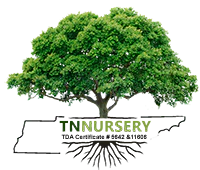Wintercreeper Plants
Wintercreeper plants, scientifically known as Euonymus fortunei, are versatile and attractive evergreen species often chosen for their ornamental value and ability to enhance a variety of landscapes and garden settings.
One of the standout features of it is its dense, glossy foliage. These evergreen shrubs or groundcovers boast oval-shaped leaves that are usually dark green. Still, some varieties exhibit variegated patterns with shades of green and white, adding a touch of visual interest. The lush foliage provides a vibrant backdrop year-round, making them particularly popular in regions with mild winters.
Wintercreeper plants are admired for their adaptability to various growing conditions. They can succeed in total sun and partisan shade, making them a universal choice for garden or landscape areas. These vigorous plants can accept various soil types, from well-draining to slightly clayey, & are drought-tolerant once established.
They Are Weed-Killers
Their versatility doesn't stop there; wintercreepers can be used in many landscaping applications. They are often employed as groundcovers to provide a low-maintenance, weed-suppressing carpet of greenery. In addition,winter creepers are frequently utilized as climbing vines to cover walls, fences, and trellises, adding vertical interest and enhancing privacy in outdoor spaces.
In the fall and early winter, some varieties of it produce small, inconspicuous flowers that give way to colorful berries. These berries can be pink, red, or orange depending on the cultivar. The berries can attract birds to your garden, contributing to local wildlife and biodiversity.
The Plants Maintenance
Maintenance of the plant is relatively straightforward. Pruning can help shape them to your desired size and maintain their appearance. These evergreens are generally disease-resistant and not susceptible to many pests, making them an attractive choice for those seeking low-maintenance landscaping options.
In summary, >wintercreeper plants are versatile evergreens known for their lush foliage, adaptability to various conditions, and suitability for various landscaping applications. Whether used as groundcovers, climbing vines, or for their year-round visual appeal, these plants bring beauty and greenery to gardens and landscapes, making them popular for enhancing outdoor spaces.
Buy Wintercreeper Plants At Garden Plant Nursery















